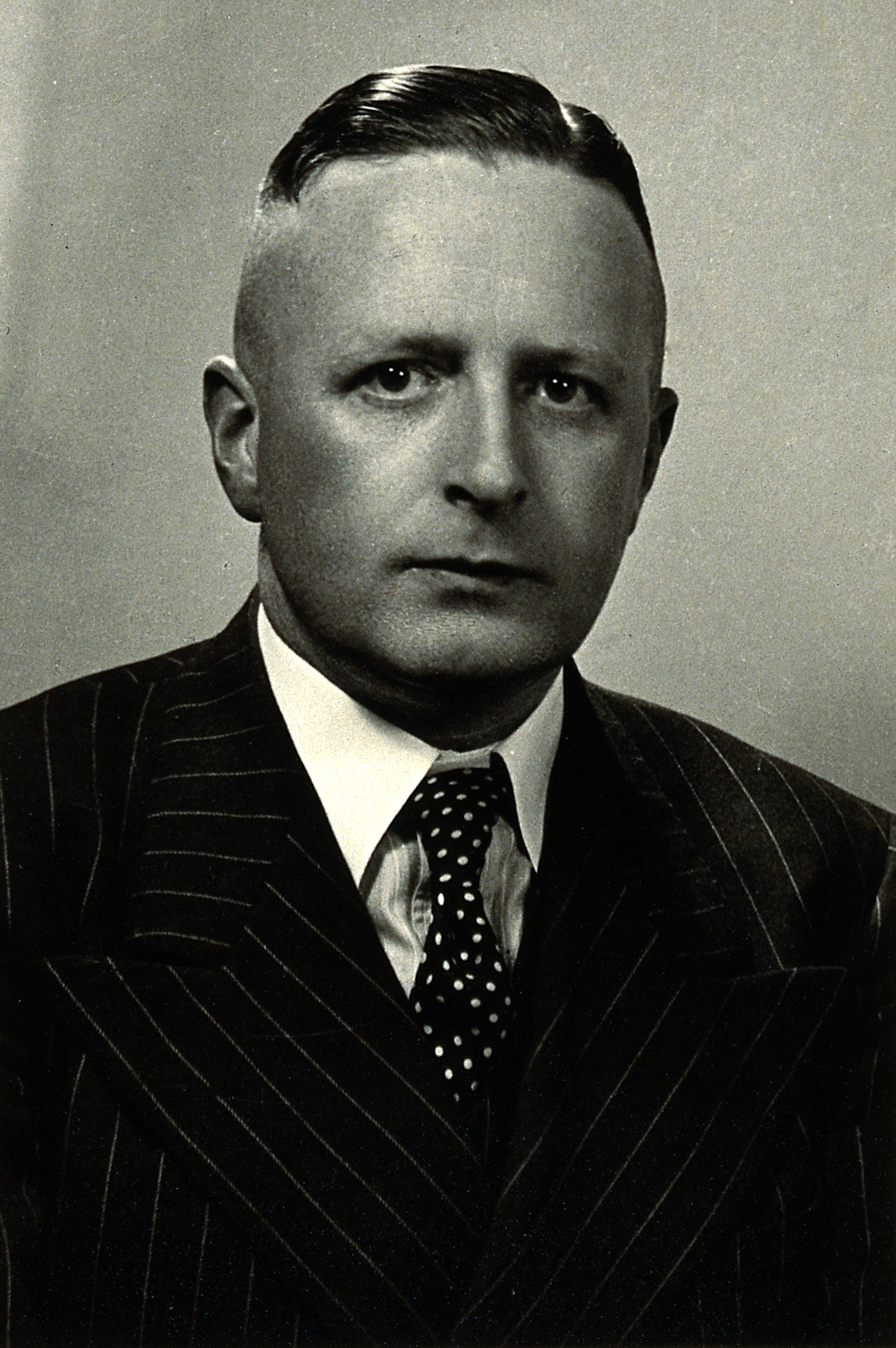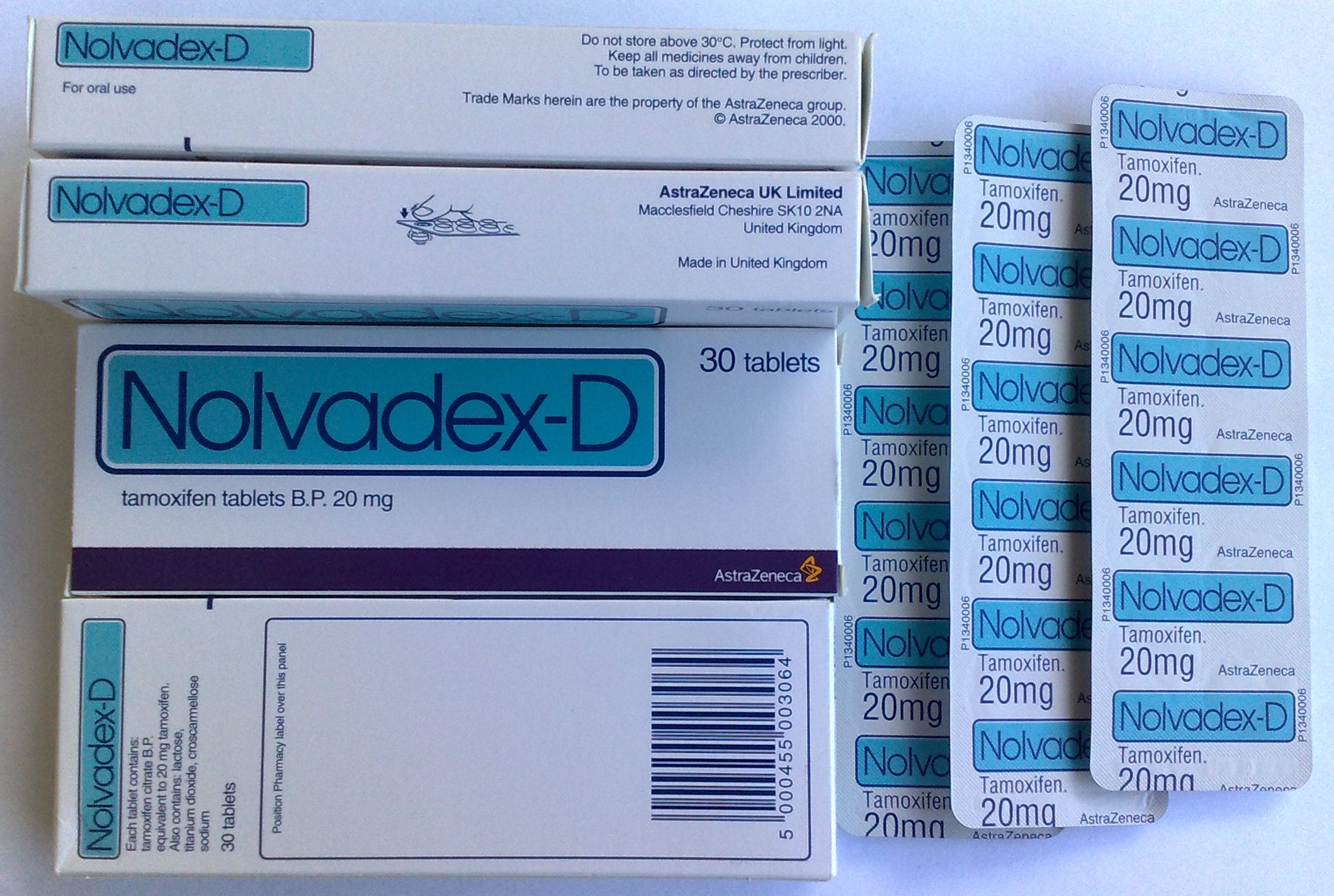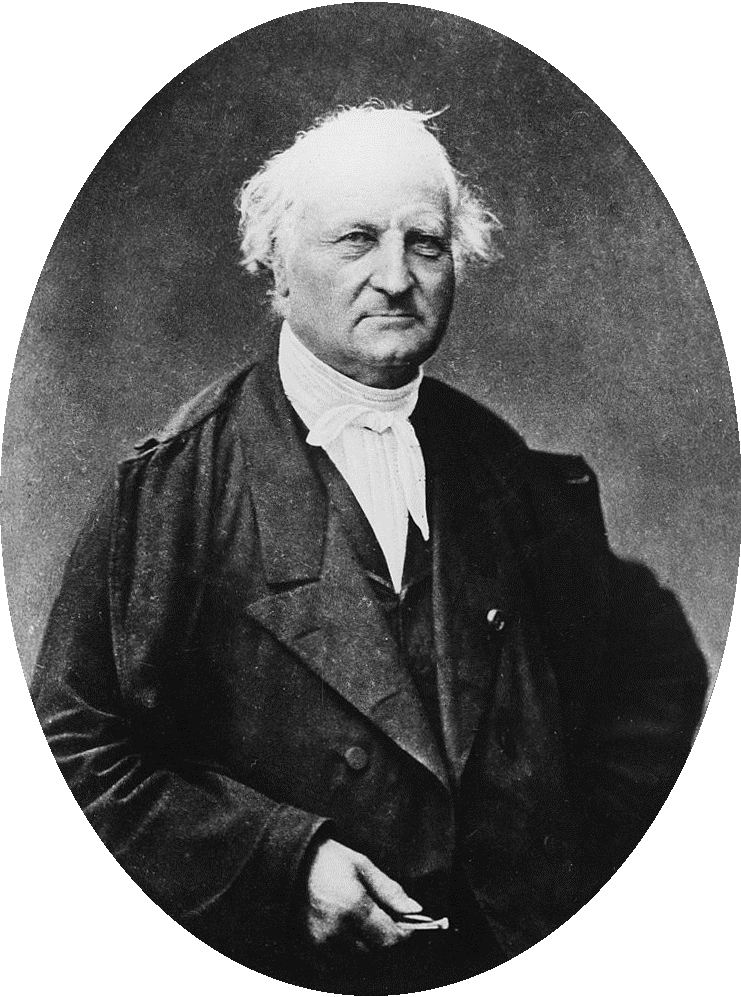|
Triphenylchloroethylene
Triphenylchloroethylene (TPCE; brand names Gynosone, Oestrogyl), or triphenylchlorethylene, also known as chlorotriphenylethylene or as phenylstilbene chloride, is a synthetic nonsteroidal estrogen of the triphenylethylene group that was marketed in the 1940s for the treatment of menopausal symptoms, vaginal atrophy, lactation suppression, and all other estrogen-indicated conditions. The estrogenic effects of triphenylethylene, the parent compound of triphenylchloroethylene, were discovered in 1937. Triphenylchloroethylene was first reported in 1938 and was found to have 20 to 100 times the estrogenic activity of the relatively weak triphenylethylene, a potentiation of effect that was afforded by its halogen substituent. The drug has a relatively long duration of action when administered via subcutaneous injection but a duration similar to that of diethylstilbestrol or estradiol benzoate when administered orally. Along with diethylstilbestrol and triphenylmethylethylene, triph ... [...More Info...] [...Related Items...] OR: [Wikipedia] [Google] [Baidu] |
Nonsteroidal Estrogen
A nonsteroidal estrogen is an estrogen with a nonsteroidal chemical structure. The most well-known example is the stilbestrol estrogen diethylstilbestrol (DES). Although nonsteroidal estrogens formerly had an important place in medicine, they have gradually fallen out of favor following the discovery of toxicities associated with high-dose DES starting in the early 1970s, and are now almost never used. On the other hand, virtually all selective estrogen receptor modulators (SERMs) are nonsteroidal, with triphenylethylenes like tamoxifen and clomifene having been derived from DES, and these drugs remain widely used in medicine for the treatment of breast cancer among other indications. In addition to pharmaceutical drugs, many xenoestrogens, including phytoestrogens, mycoestrogens, and synthetic endocrine disruptors like bisphenol A, are nonsteroidal substances with estrogenic activity. Pharmacology Nonsteroidal estrogens act as agonists of the estrogen receptors, ERα an ... [...More Info...] [...Related Items...] OR: [Wikipedia] [Google] [Baidu] |
Sir Alexander Haddow
Sir Alexander Haddow FRS FRSE (18 January 1907 – 21 January 1976) was a Scottish physician and pathologist at the forefront of cancer research in the 1940s. He served as Director of the Institute of Cancer Research from 1946 to 1969. He was also President of the Universal Union Against Cancer. His most important discovery was the Haddow Effect, by which a carcinogenic compound can be used to arrest a cancer whose origin is an unrelated carcinogen. Early life Haddow was born on 18 January 1907 in Leven, Fife, Scotland to Margaret Docherty, daughter of a coachman, and William Haddow (d.1928) of Newharthill in Glasgow. His father and grandfather were coal-miners. The family moved to Broxburn, West Lothian where his father ran Green Tree Tavern, a small bar and hotel. At age 10, Haddow fell ill with scarlet fever and remained frail and introverted. By age of 11, Haddow also suffered from appendicitis. He was much impressed by the family GP, Dr Alexander Scott, who treated hi ... [...More Info...] [...Related Items...] OR: [Wikipedia] [Google] [Baidu] |
Clomifene
Clomifene, also known as clomiphene, is a medication used to treat infertility in women who do not ovulate, including those with polycystic ovary syndrome. Use results in a greater chance of twins. It is taken by mouth once a day, with a course of treatment that usually lasts for five days. Common side effects include pelvic pain and hot flashes. Other side effects can include changes in vision, vomiting, trouble sleeping, ovarian cancer, and seizures. It is not recommended in people with liver disease or abnormal vaginal bleeding of unknown cause or who are pregnant. Clomifene is in the selective estrogen receptor modulator (SERM) family of medication and is a nonsteroidal medication. It works by causing the release of GnRH by the hypothalamus, and subsequently gonadotropin from the anterior pituitary. Clomifene was approved for medical use in the United States in 1967. It is on the World Health Organization's List of Essential Medicines, under the category "Ovulation indu ... [...More Info...] [...Related Items...] OR: [Wikipedia] [Google] [Baidu] |
Ethyl Group
In organic chemistry, an ethyl group (abbr. Et) is an alkyl substituent with the formula , derived from ethane (). ''Ethyl'' is used in the International Union of Pure and Applied Chemistry's nomenclature of organic chemistry for a saturated two-carbon moiety in a molecule, while the prefix "''eth-''" is used to indicate the presence of two carbon atoms in the molecule. Ethylation Ethylation is the formation of a compound by introduction of the ethyl group. The most widely practiced example of this reaction is the ethylation of benzene with ethylene to yield ethylbenzene, a precursor to styrene, which is a precursor to polystyrene. Approximately 24.7 million tons of ethylbenzene were produced in 1999. :: Many ethyl-containing compounds are generated by electrophilic ethylation, i.e. treatment of nucleophiles with sources of Et+. Triethyloxonium tetrafluoroborate t3OF4 is such a reagent. For good nucleophiles, less electrophilic reagents are employed, such as ethyl ... [...More Info...] [...Related Items...] OR: [Wikipedia] [Google] [Baidu] |
Selective Estrogen Receptor Modulator
Selective estrogen receptor modulators (SERMs), also known as estrogen receptor agonist/antagonists (ERAAs), are a class of drugs that act on the estrogen receptor (ER). A characteristic that distinguishes these substances from pure ER agonists and antagonists (that is, full agonists and silent antagonists) is that their action is different in various tissues, thereby granting the possibility to selectively inhibit or stimulate estrogen-like action in various tissues. Medical uses SERMs are used for various estrogen-related diseases, including treatment of ovulatory dysfunction in the management of infertility, treatment and prevention of postmenopausal osteoporosis, treatment and reduction in risk of breast cancer and treatment of dyspareunia due to menopause. SERM is also used in combination with conjugated estrogens indicated for the treatment of estrogen deficiency symptoms, and vasomotor symptoms associated with menopause. SERMs are used dependent on their pattern of ... [...More Info...] [...Related Items...] OR: [Wikipedia] [Google] [Baidu] |
Broparestrol
Broparestrol () (brand names Acnestrol, Longestrol; former developmental code name LN-107), also known as α-bromo-α,β-diphenyl-β-p-ethylphenylethylene (BDPE), is a synthetic, nonsteroidal selective estrogen receptor modulator (SERM) of the triphenylethylene group that has been used in Europe as a dermatological agent and for the treatment of breast cancer. The drug is described as slightly estrogenic and potently antiestrogenic, and inhibits mammary gland development and suppresses prolactin levels in animals. It is structurally related to clomifene and diethylstilbestrol. Broparestrol is a mixture of ''E-'' and ''Z-'' isomer In chemistry, isomers are molecules or polyatomic ions with identical molecular formulae – that is, same number of atoms of each element – but distinct arrangements of atoms in space. Isomerism is existence or possibility of isomers. ...s (LN-1643 and LN-2299, respectively), both of which are active and are similarly antiestrogenic but, u ... [...More Info...] [...Related Items...] OR: [Wikipedia] [Google] [Baidu] |
Chlorine
Chlorine is a chemical element with the symbol Cl and atomic number 17. The second-lightest of the halogens, it appears between fluorine and bromine in the periodic table and its properties are mostly intermediate between them. Chlorine is a yellow-green gas at room temperature. It is an extremely reactive element and a strong oxidising agent: among the elements, it has the highest electron affinity and the third-highest electronegativity on the revised Pauling scale, behind only oxygen and fluorine. Chlorine played an important role in the experiments conducted by medieval alchemists, which commonly involved the heating of chloride salts like ammonium chloride ( sal ammoniac) and sodium chloride (common salt), producing various chemical substances containing chlorine such as hydrogen chloride, mercury(II) chloride (corrosive sublimate), and hydrochloric acid (in the form of ). However, the nature of free chlorine gas as a separate substance was only recognised ar ... [...More Info...] [...Related Items...] OR: [Wikipedia] [Google] [Baidu] |
Bromine
Bromine is a chemical element with the symbol Br and atomic number 35. It is the third-lightest element in group 17 of the periodic table (halogens) and is a volatile red-brown liquid at room temperature that evaporates readily to form a similarly coloured vapour. Its properties are intermediate between those of chlorine and iodine. Isolated independently by two chemists, Carl Jacob Löwig (in 1825) and Antoine Jérôme Balard (in 1826), its name was derived from the Ancient Greek (bromos) meaning "stench", referring to its sharp and pungent smell. Elemental bromine is very reactive and thus does not occur as a native element in nature but it occurs in colourless soluble crystalline mineral halide salts, analogous to table salt. In fact, bromine and all the halogens are so reactive that they form bonds in pairs—never in single atoms. While it is rather rare in the Earth's crust, the high solubility of the bromide ion (Br) has caused its accumulation in the oceans. Commer ... [...More Info...] [...Related Items...] OR: [Wikipedia] [Google] [Baidu] |
Estrobin
Estrobin, also known as α,α-di(''p''-ethoxyphenyl)-β-phenylbromoethylene and commonly abbreviated as DBE, is a synthetic, nonsteroidal estrogen of the triphenylethylene group that was never marketed. Chlorotrianisene, and subsequently clomifene and tamoxifen, were derived from it. Estrobin, similarly to other triphenylethylenes, is very lipophilic and hence very long-lasting in its duration of action. Similarly to chlorotrianisene, estrobin behaves a prodrug to a much more potent estrogen in the body. See also * Broparestrol * Diethylstilbestrol * M2613 * Stilbestrol * Ethamoxytriphetol Ethamoxytriphetol (developmental code name MER-25) is a synthetic nonsteroidal antiestrogen that was studied clinically in the late 1950s and early 1960s but was never marketed. MER-25 was first reported in 1958, and was the first antiestrogen ... * 2,8-DHHHC References Organobromides Prodrugs Selective estrogen receptor modulators Synthetic estrogens Triphenylethylene ... [...More Info...] [...Related Items...] OR: [Wikipedia] [Google] [Baidu] |
Methoxy Group
In organic chemistry, a methoxy group is the functional group consisting of a methyl group bound to oxygen. This alkoxy group has the formula . On a benzene ring, the Hammett equation classifies a methoxy substituent at the ''para'' position as an electron-donating group, but as an electron-withdrawing group if at the ''meta'' position. At the ''ortho'' position, steric effects are likely to cause a significant alteration in the Hammett equation prediction which otherwise follows the same trend as that of the ''para'' position. Occurrence The simplest of methoxy compounds are methanol and dimethyl ether. Other methoxy ethers include anisole and vanillin. Many alkoxides contain methoxy groups, e.g. tetramethyl orthosilicate and titanium methoxide. Such compounds are often classified as methoxides. Esters with a methoxy group can be referred to as methyl esters, and the —COOCH3 substituent is called a methoxycarbonyl. Biosynthesis In nature, methoxy groups are found on nuc ... [...More Info...] [...Related Items...] OR: [Wikipedia] [Google] [Baidu] |
Phenyl Ring
In organic chemistry, the phenyl group, or phenyl ring, is a cyclic group of atoms with the formula C6 H5, and is often represented by the symbol Ph. Phenyl group is closely related to benzene and can be viewed as a benzene ring, minus a hydrogen, which may be replaced by some other element or compound to serve as a functional group. Phenyl group has six carbon atoms bonded together in a hexagonal planar ring, five of which are bonded to individual hydrogen atoms, with the remaining carbon bonded to a substituent. Phenyl groups are commonplace in organic chemistry. Although often depicted with alternating double and single bonds, phenyl group is chemically aromatic and has equal bond lengths between carbon atoms in the ring. Nomenclature Usually, a "phenyl group" is synonymous with C6H5− and is represented by the symbol Ph or, archaically, Φ. Benzene is sometimes denoted as PhH. Phenyl groups are generally attached to other atoms or groups. For example, triphenylmethane (Ph3 ... [...More Info...] [...Related Items...] OR: [Wikipedia] [Google] [Baidu] |





